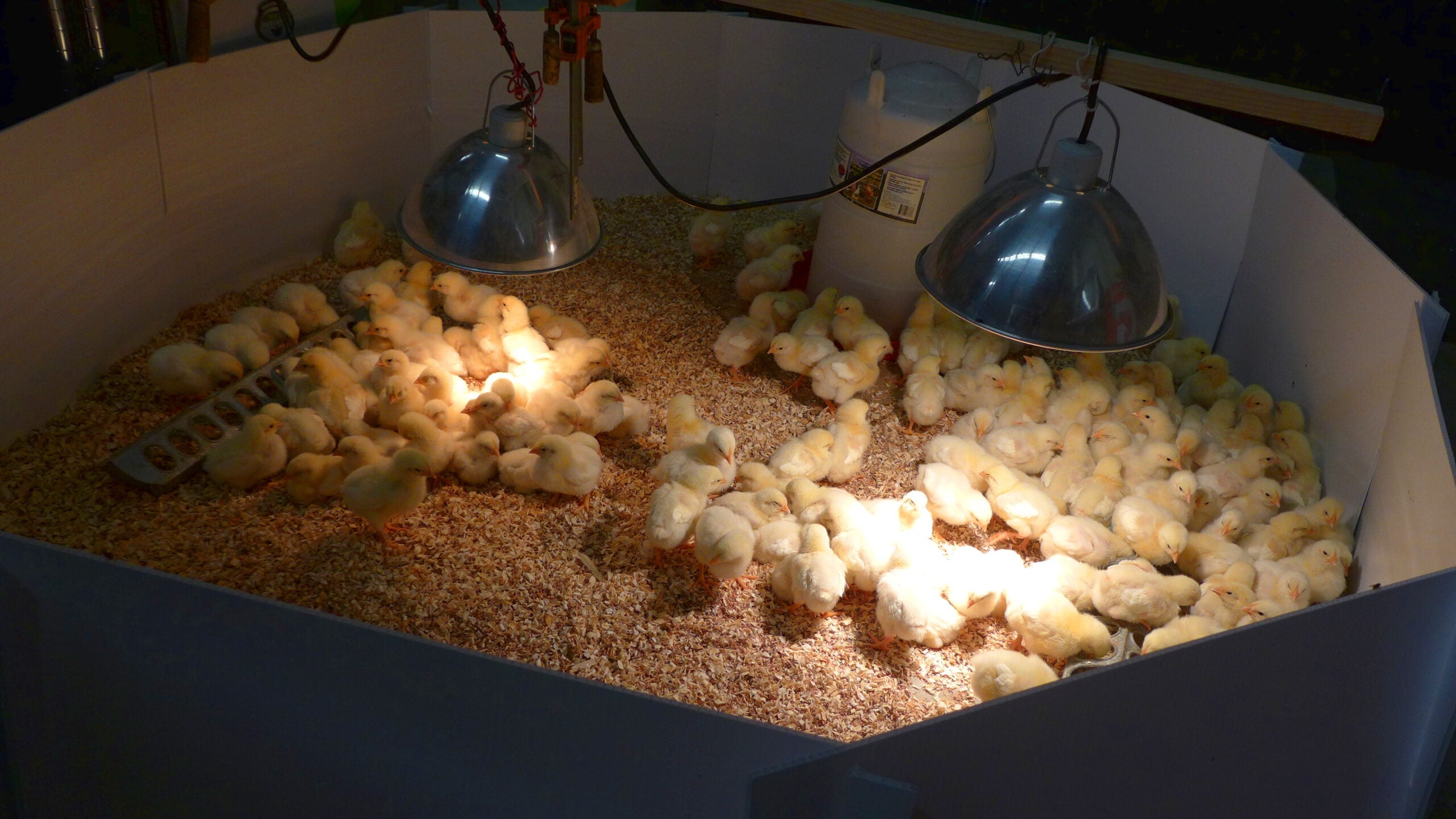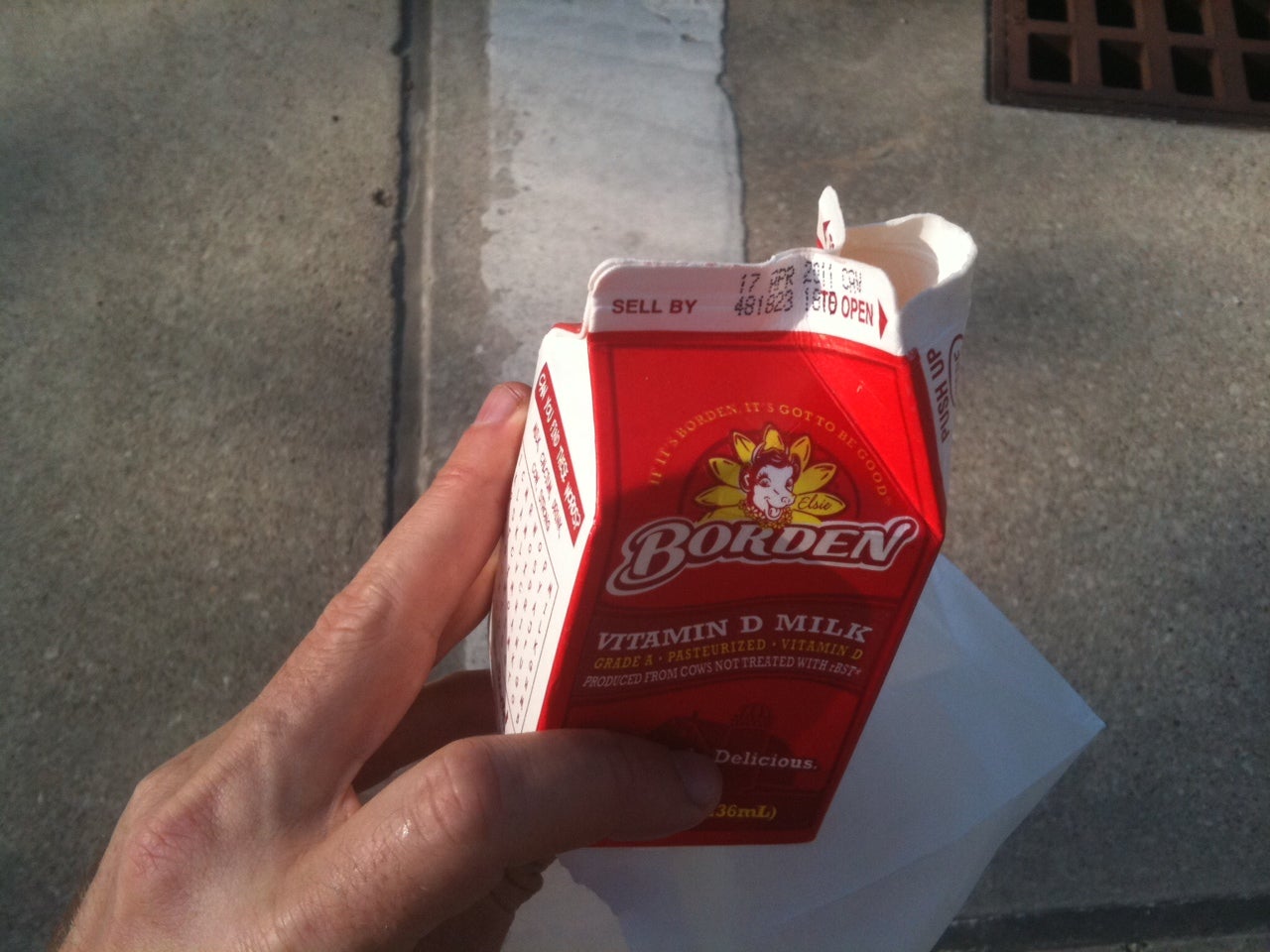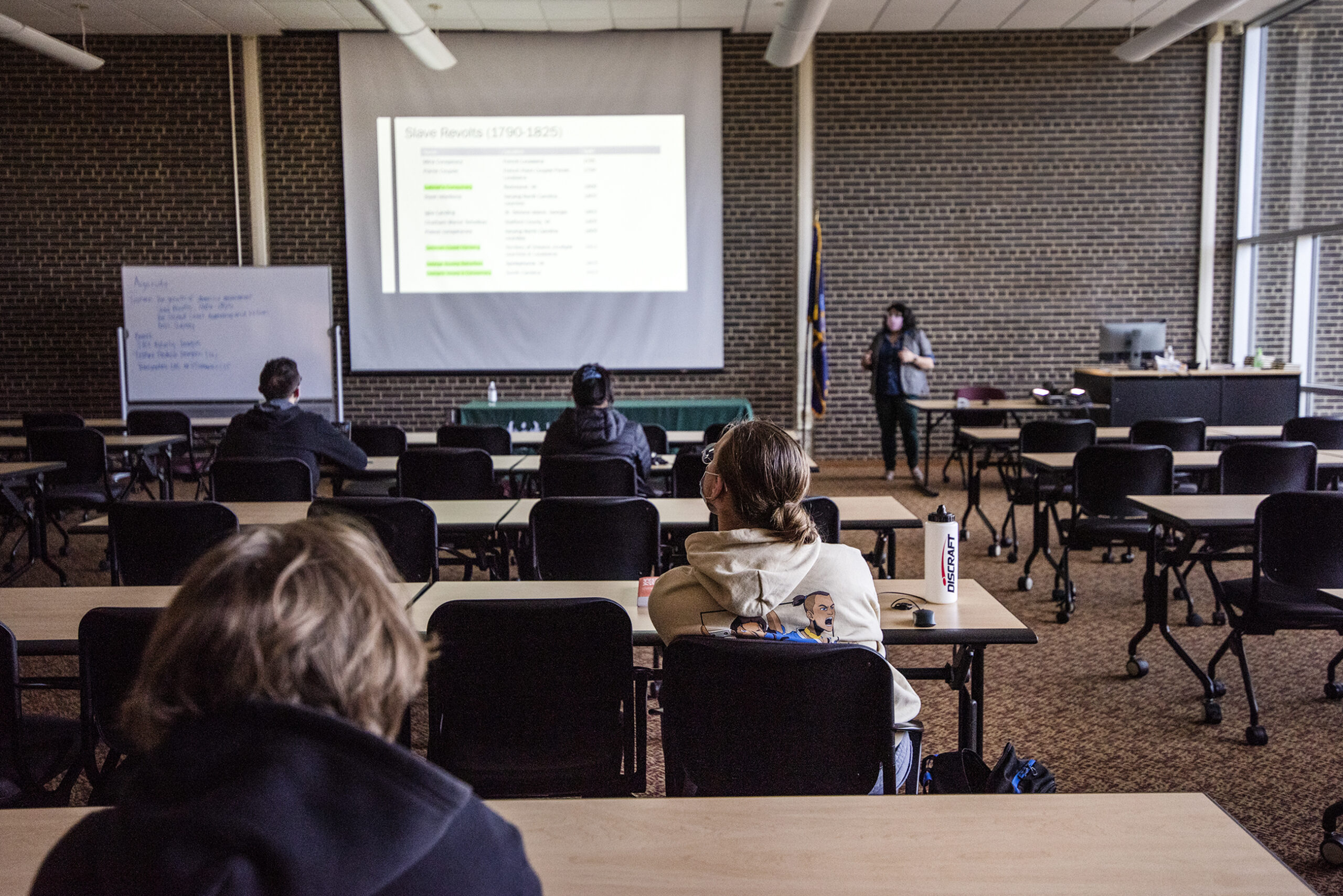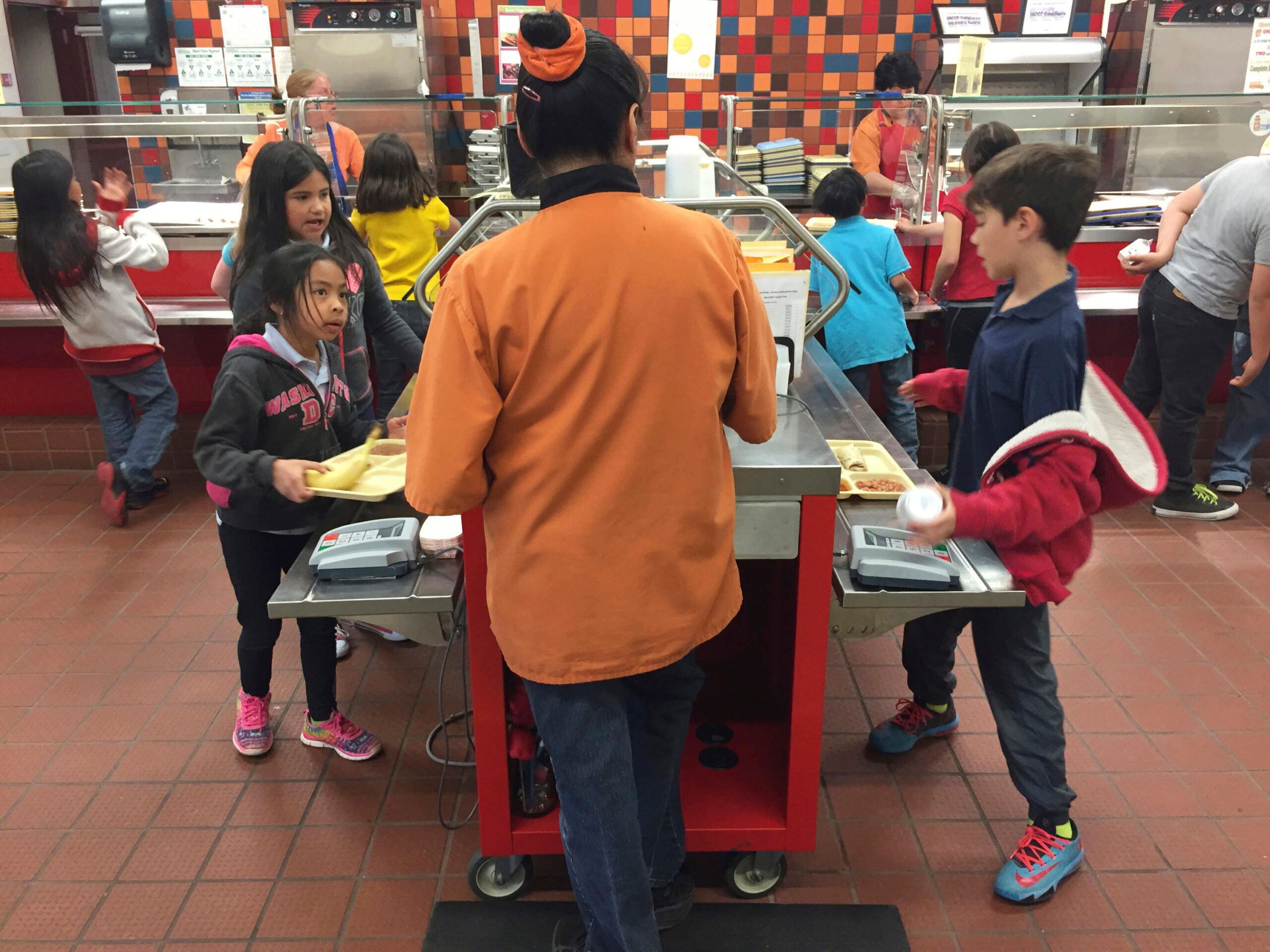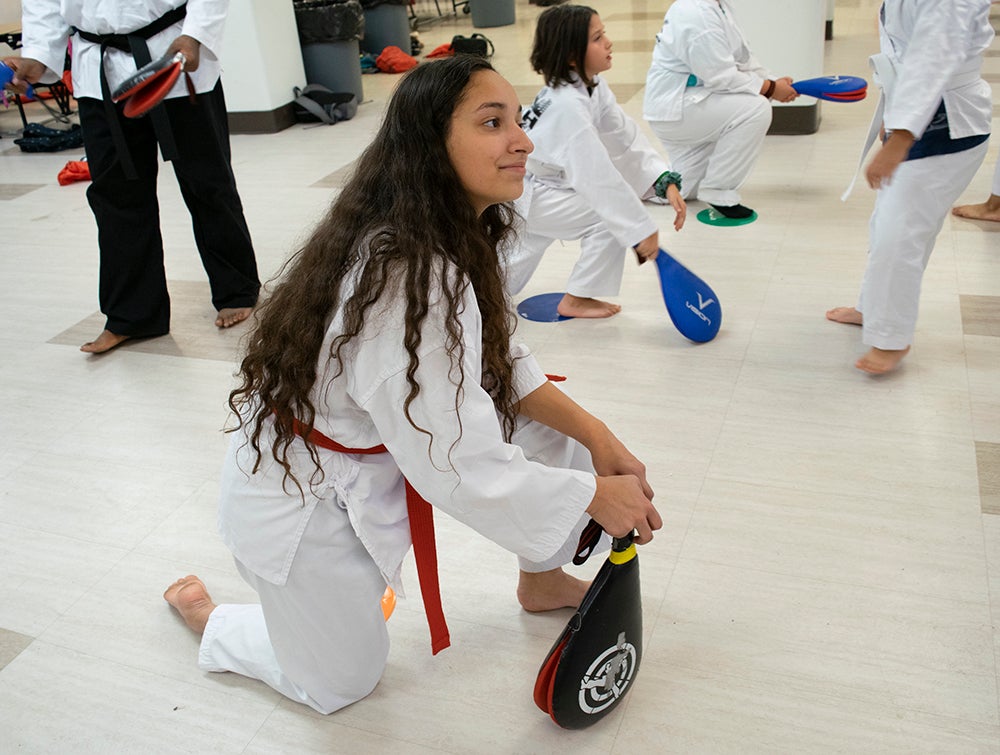Just inside a room in Holmen High School in southwestern Wisconsin, 150 fuzzy, yellow week-old chicks huddle together under heat lamps.
Every morning, Holmen High School junior Gregory O’Laughlin checks on them. The first thing he does is make sure their bedding is clean and dry.
“Then (I) usually take the water out, fill it, and as it’s filling feed them — and feed them all at the same time so they’re not fighting over everything,” he said.
News with a little more humanity
WPR’s “Wisconsin Today” newsletter keeps you connected to the state you love without feeling overwhelmed. No paywall. No agenda. No corporate filter.
These chicks will stay at the high school until they get bigger. From there, they’ll move to nearby farms where students and volunteers will continue to care for them. After eight weeks, the chickens head to a Minnesota processing facility, and eventually, the chicken will return to Holmen to be served in the cafeteria.
O’Laughlin has helped raise hundreds of other chickens for the school that have already been sent to the processing facility.
“It’s just good to know that I’m helping the school,” said O’Laughlin.
Senior Chris Jessen got the idea to raise poultry as part of a Future Farmers of America project. The project initially had a career development focus, but then Jessen thought he could work poultry into the Farm2School program, an iniative that aims to bring more locally sourced produce and meat into classrooms. Through the project, Jessen’s fellow FFA members could learn more about chickens while teaching their classmates about what it takes to raise food.
“Most kids just don’t really know the background of their food … ‘Oh it just popped up on my plate,’ and that’s about it. They don’t really take the time to appreciate the time that farmers put into it, or students such as Greg that just really did a lot (and) took time out of their day to do this.”
Not only are Holmen students raising chickens, but they also grow lettuce year-round in a hydroponic garden that goes straight to the high school cafeteria’s salad bar. Students also raise sweet corn and potatoes that are served throughout the district. Each school has an outdoor garden lush with tomatoes, peppers, and squash.
These are just some of the 200-plus school gardens in Wisconsin. Wisconsin School Garden Initiative training and outreach specialist Beth Hanna said that more and more schools are starting gardens each year. She said it’s a great development because school gardens encourage students to eat healthier.
“Whether it’s that student who planted the seed, or it’s then in the cafeteria where students are more likely to try it because they know where it came from,” said Hanna. “They know their class grew it or they know of the high schooler down the road who helped.”
For Holmen agriscience instructor and FFA advisor Roger King, it’s also about teaching future farmers about what consumers want. He said that more people want to know where their food comes from and that mindset can shape his curriculum.
“American agriculture knows we have to do that because if not, we’re not going to support the society we have,” said King. “That’s to me an intriguing part of getting involved in agriculture and FFA.”
In a few months, the chicken will return to Holmen, frozen. The district is going to pick one day when all the students in every school will have it for lunch. The FFA students will serve the chicken they raised to their classmates, remaining involved with the poultry from start to finish. Before that, they just have to settle on the perfect baked chicken recipe.
Wisconsin Public Radio, © Copyright 2025, Board of Regents of the University of Wisconsin System and Wisconsin Educational Communications Board.

